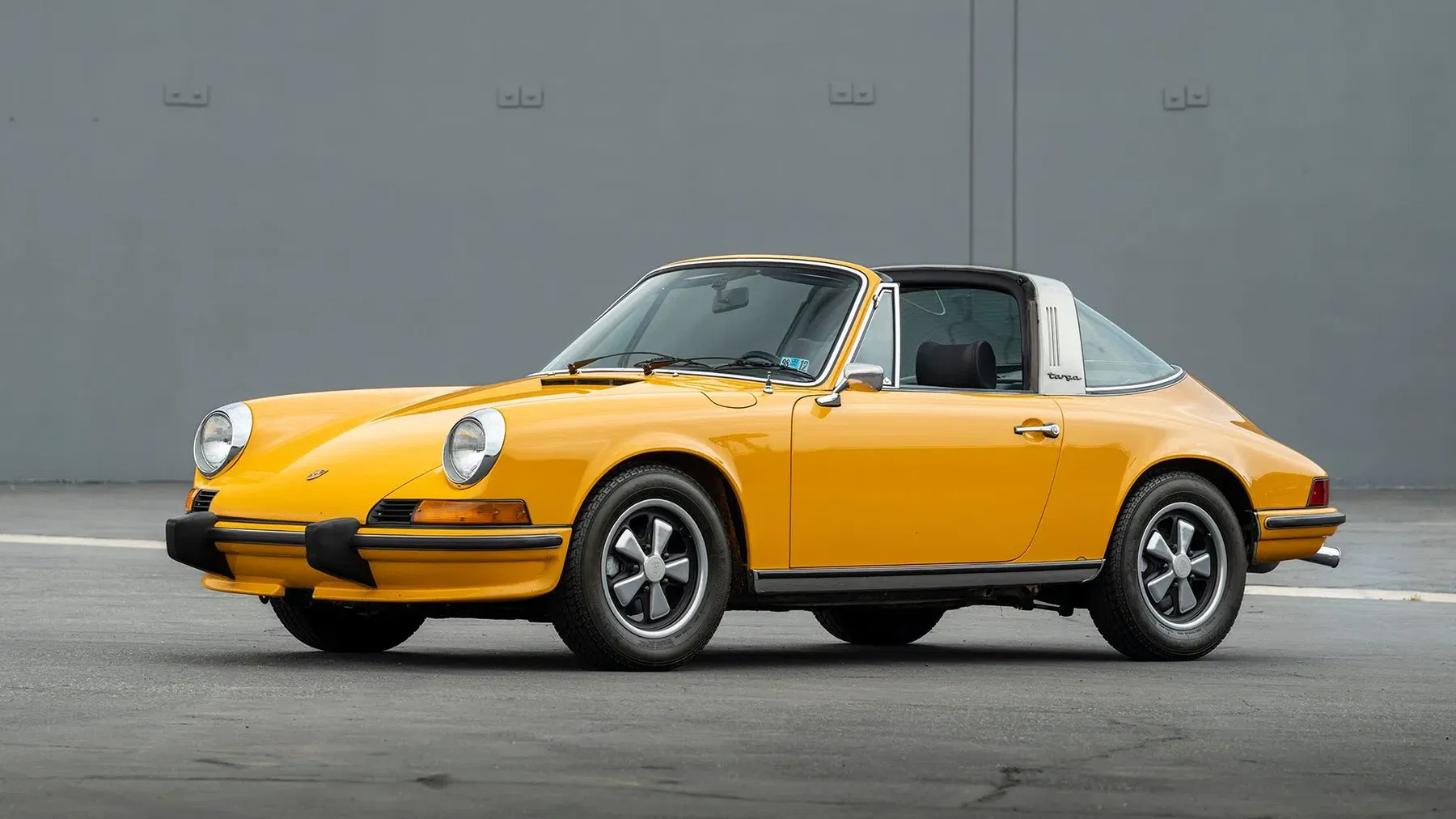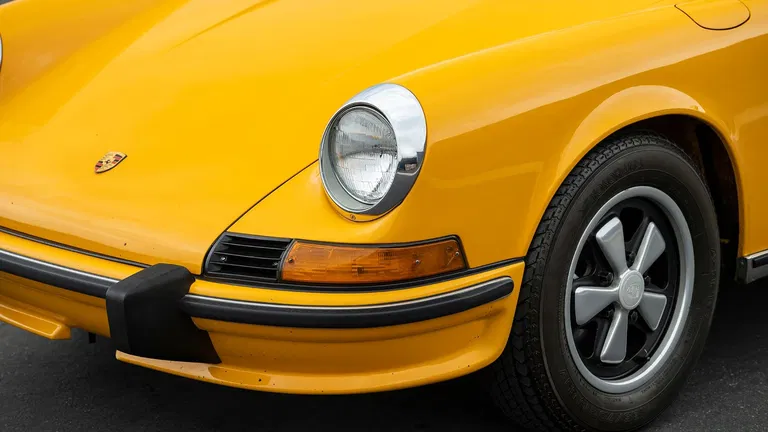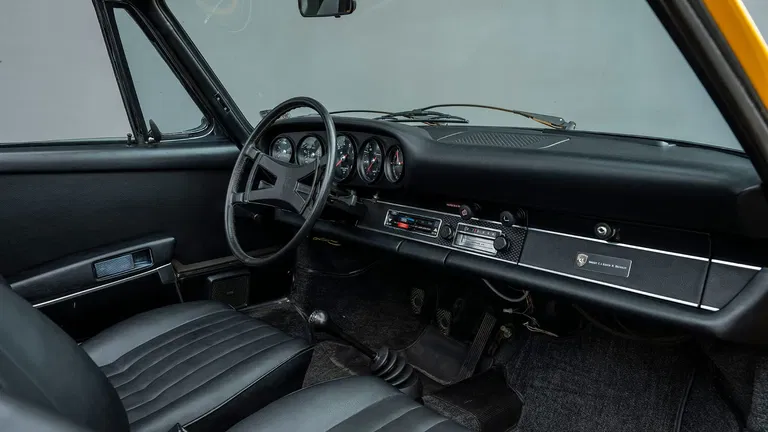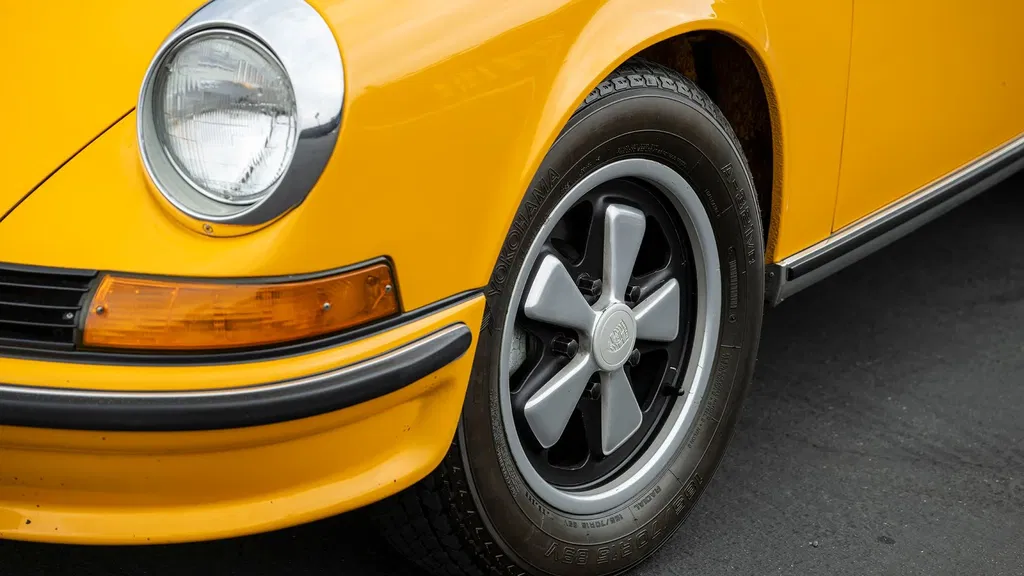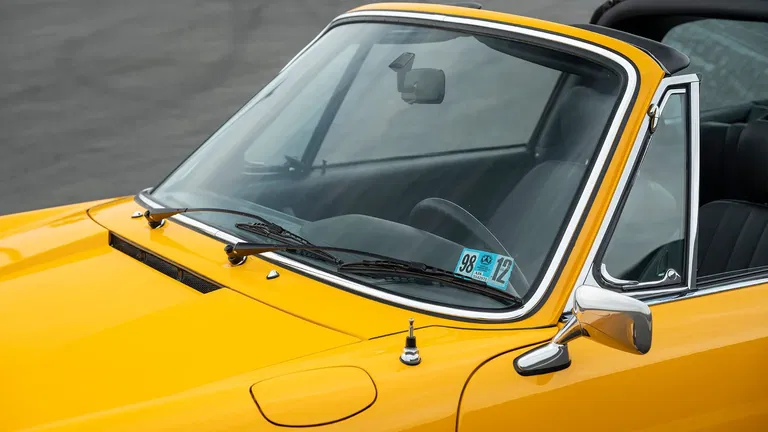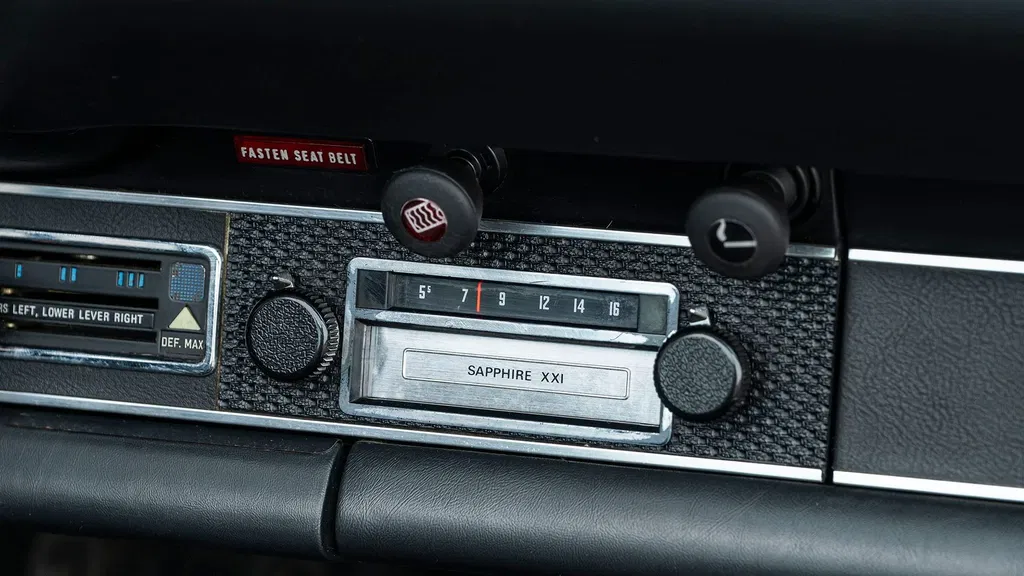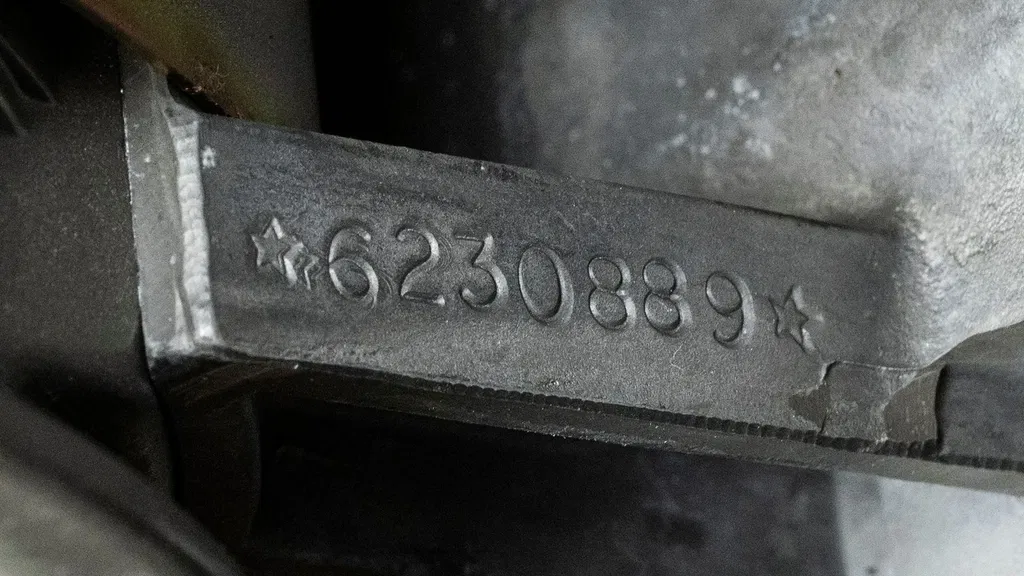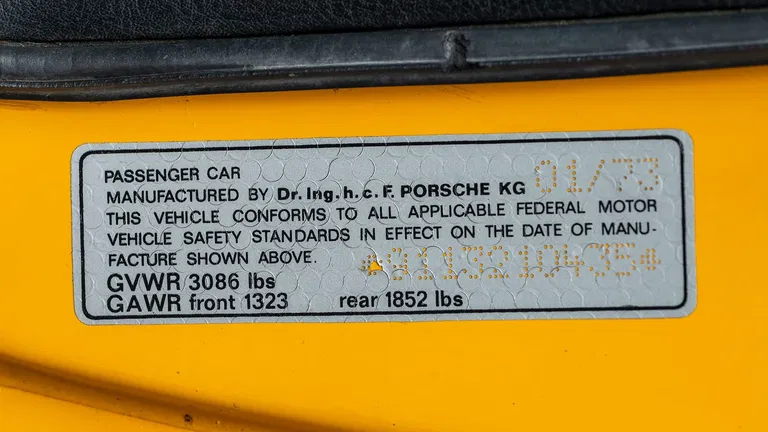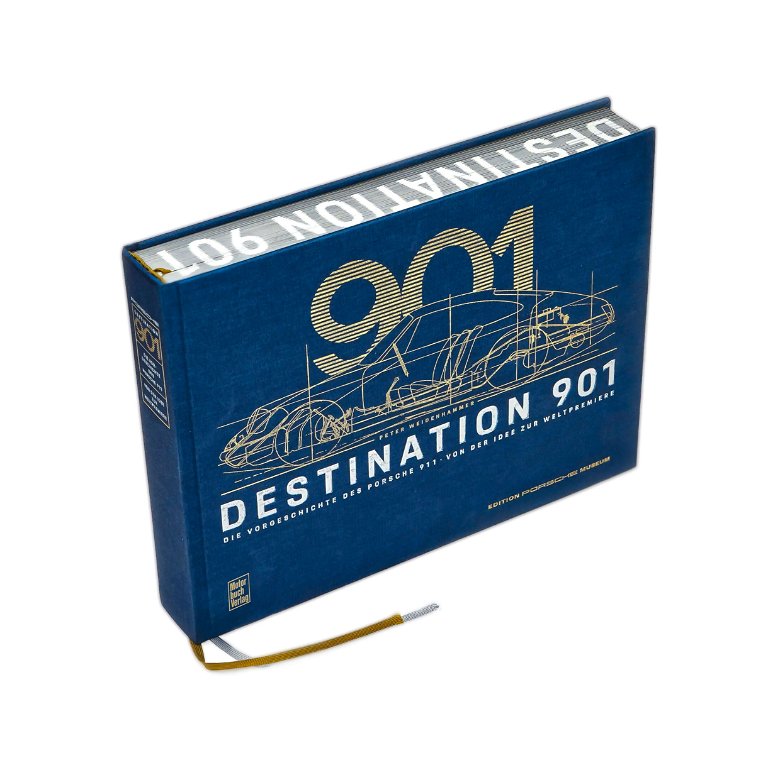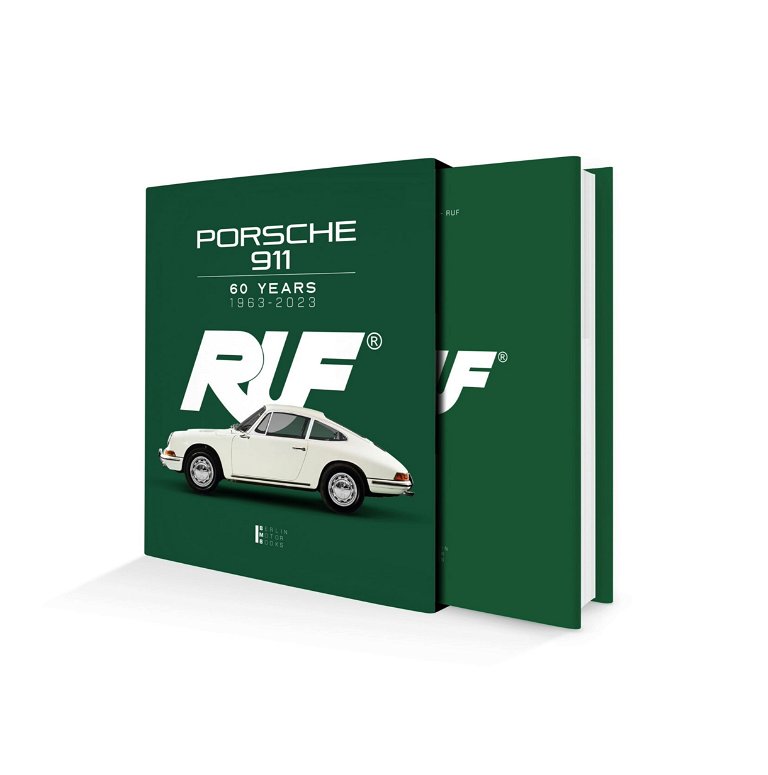The 911, produced in T, E, and S versions since the 1969 model year, received a major displacement increase across the range for 1972, up from 2,195 to 2,341 cc. This was reflected in their respective power outputs, which were now rated at 135 horsepower for the T, 165 for the E, and 190 for the top-line S model. Other big news for 1972 was the implementation of Bosch mechanical fuel injection across the 911 model range in the U.S. While the “E” designation, standing for the German word for injection (Einspritzung), may have become redundant, it was proof positive that fuel injection pioneered on the 911 E was the future. As expected, the ever-popular Targa body continued to be available on all three models for an additional $726.
According to its original window sticker, this U.S.-market 1973 Porsche 911 E Targa, finished in Signal Yellow over a Black Leatherette upholstery, was factory-equipped with 15-inch Fuchs forged alloy wheels, a five-speed transmission, tinted glass all-around, front and rear swaybars, and the Appearance Group. Once the car arrived at Porsche Audi Capitol Inc. of Mechanicsburg, Pennsylvania it retailed for $9,882. As was the tradition of the time, the new owners, Robert and Karen Dressler of Williamsport, added their name on a plaque affixed to the glovebox door and began a remarkable period of long-term ownership that is said to have ended in 2017, an impressive showing of devotion.
Shortly after the consignor’s acquisition, this lovely open-topped 911 was sent to Beverly Hills Porsche for a complete engine rebuild, transmission reseal, and complete inspection. A ten-page invoice on file records just over $57,000 spent to return the 2.4-liter MFI-powered Targa to optimal condition. The rebuild featured new Mahle pistons, internal bearings, 24 new head studs, heat exchangers and a muffler. The ancillary components were handled by some of Southern California’s best with Gus Pfister working on the MFI components and Competition Engineering responsible for $5,500 worth of machine work. At the same time the 915 transmission received a reseal with a new clutch disc and starter motor. The suspension and brakes saw attention as well with four new brake calipers as well as new shocks front and rear and the replacement of the front control arms, ball joints, and bushings.
Early 911s with long-term ownership in a fantastic color are a rare breed. Add to that a recent engine rebuild with assistance from well-regarded specialists and a comprehensive inspection and service, all paint the picture of a fantastically presented open-topped 911 from Porsche’s final year of “longhood” production.
